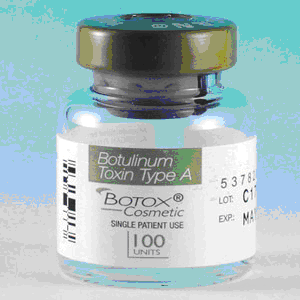Even though the toxin produced by Clostridium botulinum is highly potent, there are some clinical and cosmetic applications for it. The purpose of utilizing the neurotoxin in C. botulinum at first was for a purely medical reason – the treatment of neurological disorders such as cervical dystonia and other muscle spasm conditions. But when the toxins (in extremely small doses) were injected into the faces of people suffering from these problems, not only were they helped, but they also noticed that their wrinkles lightened in appearance! Immediately cosmetologists realized the great potential for this, and Botox was formed.
![]()
Botox works by cutting off communication between nerve cells and destroying a protein that controls neurotransmitters – SNAP-25. The result is a temporary paralysis of muscles that form furrows, wrinkles, and various other facial lines. Oh, and of course, smoother looking skin. This effect generally stays for 4 to 6 months, and then the paralysis wears off.

![]()

Potential risks for Botox are generally very limited. Doctors typically inject 25 to 50 units of botox to smooth wrinkles, while it would take 3,500 units to prove to be fatal. Headaches and bruising are very common, and a small percentage of patients develop drooping of the face. In terms of fatalities, 16 have been recorded, but the FDA claims that none of these were as a result as cosmetic use, instead by some type of abuse.

![]()

Botox was available for public use starting in 1990, and since then its popularity has exploded. In the year 2000, for example, 800,000 Americans received injections. It seems common nowadays to see celebrities and politicians receiving a little extra help removing wrinkles.
Before you go, be sure to check out the Interesting Facts page. There are a couple of really cool things on there about the bacteria that can pack quite the punch -- Clostridium botulinum.
